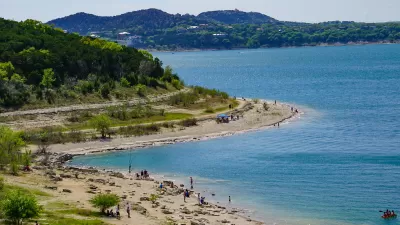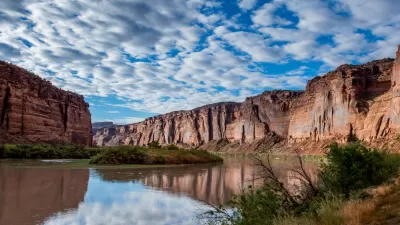Small desert communities are looking for ways to conserve water as their tourist and resident populations grow.

Like southern Utah and other scenic regions of the U.S. Southwest, West Texas is seeing dramatic growth as more people discover its natural beauty, relatively low-cost real estate, and cultural amenities.
This rapid growth is prompting concerns about whether the region’s water supply can keep up, writes Sarah Melotte in The Daily Yonder. “A survey conducted by Big Bend National Park showed that more than half a million people visited the park in 2022, a 12% increase since 2019, the last year the park was open full-time before the pandemic.”
Meanwhile, Brewster County added 4,700 short-term rental units between 2021 and 2023, and more people are moving to the area’s rural communities seeking space and solitude. Melotte points out that rural communities tend to use less water per housing unit than urban areas. However, “For a well to be approved by the Texas Commission on Environmental Quality (TCEQ), it has to be able to produce 40 gallons per minute from every connection,” regardless of its location or the type of housing unit it serves.
Melotte notes that a new assistance program from the Texas Water Development Board, the Texas Water Fund, seeks to help small communities manage their water resources and provide technical assistance for water conservation projects.
FULL STORY: More Folks Are Falling in Love with the West Texas Desert. Will There Be Enough Water to Sustain Them?

Maui's Vacation Rental Debate Turns Ugly
Verbal attacks, misinformation campaigns and fistfights plague a high-stakes debate to convert thousands of vacation rentals into long-term housing.

Planetizen Federal Action Tracker
A weekly monitor of how Trump’s orders and actions are impacting planners and planning in America.

In Urban Planning, AI Prompting Could be the New Design Thinking
Creativity has long been key to great urban design. What if we see AI as our new creative partner?

King County Supportive Housing Program Offers Hope for Unhoused Residents
The county is taking a ‘Housing First’ approach that prioritizes getting people into housing, then offering wraparound supportive services.

Researchers Use AI to Get Clearer Picture of US Housing
Analysts are using artificial intelligence to supercharge their research by allowing them to comb through data faster. Though these AI tools can be error prone, they save time and housing researchers are optimistic about the future.

Making Shared Micromobility More Inclusive
Cities and shared mobility system operators can do more to include people with disabilities in planning and operations, per a new report.
Urban Design for Planners 1: Software Tools
This six-course series explores essential urban design concepts using open source software and equips planners with the tools they need to participate fully in the urban design process.
Planning for Universal Design
Learn the tools for implementing Universal Design in planning regulations.
planning NEXT
Appalachian Highlands Housing Partners
Mpact (founded as Rail~Volution)
City of Camden Redevelopment Agency
City of Astoria
City of Portland
City of Laramie





























